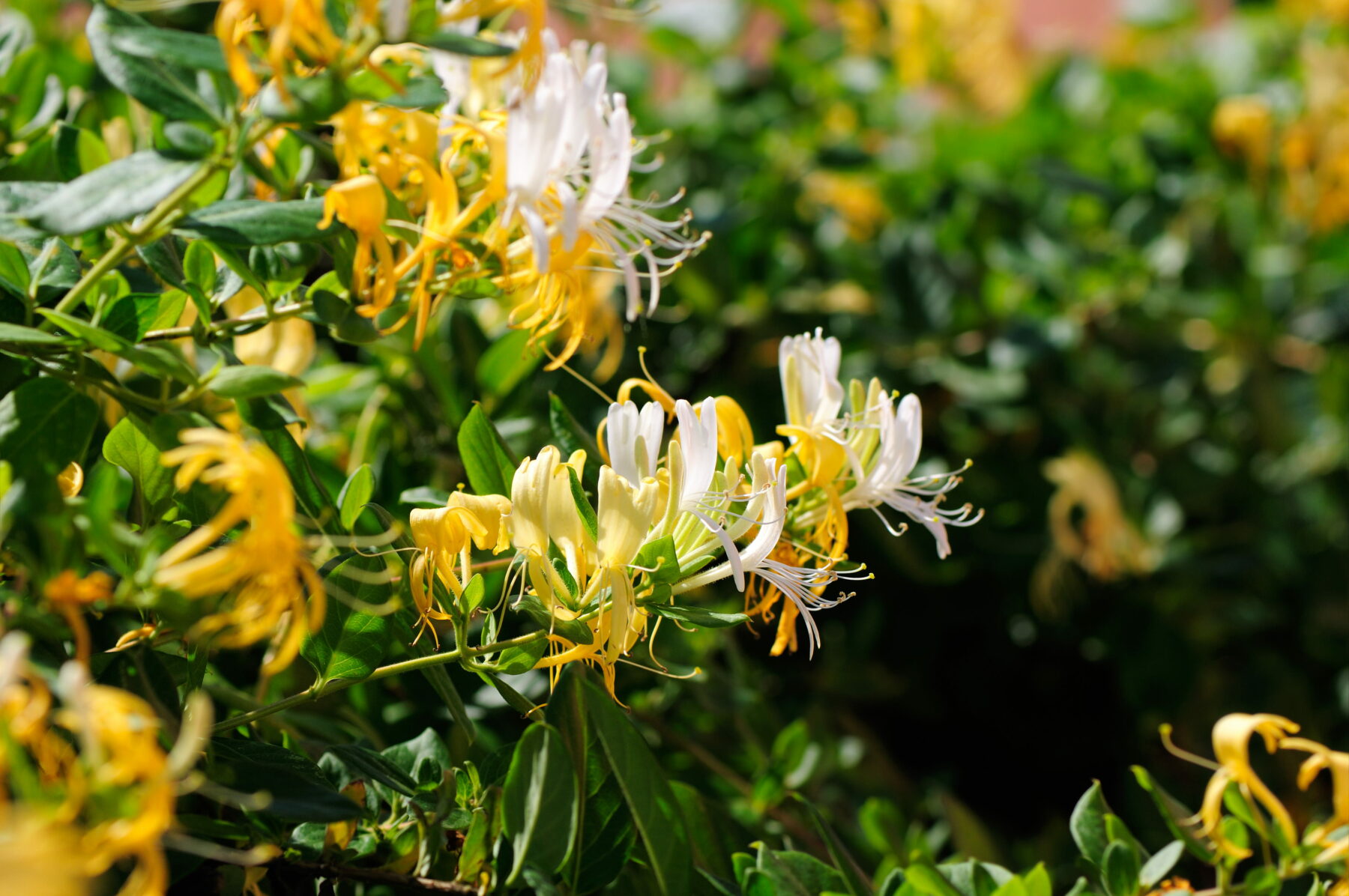
Japanese honeysuckle is a common sight in the south during the summer. It is a twining vine with oval-shaped, opposite leaves that are dark green on top and pale underneath. The vine produces fragrant flowers in pairs that start off as creamy white and gradually turn yellow with age. Each flower has a long, tubular shape with five fused petals and a prominent set of stamens. The vine’s stems are woody and can become quite thick over time. Additionally, Japanese honeysuckle produces small, black berries in late summer or fall. In the winter in our area, the vine is also semi-evergreen to evergreen, meaning some vines may lose some or all of their leaves, while others may retain them. The first leaves of the season can also appear lobed, as opposed to the “normal” unlobed leaves.
Although there are various honeysuckle species in the area, many of which are non-native, but some native species exist as well, Japanese honeysuckle is extremely prevalent, preferring sunny spots such as roadsides, at the edge of forests, in fields, etc.. While I have fond memories of enjoying the sweet nectar from its flowers during recess in elementary school, it is important to note that Japanese honeysuckle is an aggressive invasive species. These vines exhibit a climbing behavior, often smothering other plants, blocking their access to sunlight and in some cases, the weight of the vine can even cause branches to fall or trees to topple.
To prevent the spread of Japanese honeysuckle, it is best to tackle it before it gets out of hand, and especially before it sets seeds in late summer or fall. Once berries form on the plant, removing it risks dropping seeds and spreading the vine to new locations. Birds are also attracted to the berries as they are essentially candy; high in carbohydrates but low in fats and other nutrients. As birds eat the berries, they further the spread of the species.
Manual removal of Japanese honeysuckle is possible, simply pulling the vines and digging the roots out of the ground, but it is ideal to extract all the roots or else you risk the plant resprouting. This can be accomplished by following the vines to the ground and finding where they are rooted. You can then use a shovel, soil knife, etc. to dig the root out.
If you find yourself overwhelmed by the amount of honeysuckle you have to deal with, a good place to start is by removing it from native trees, shrubs, or other natives of interest.
Combining mechanical and chemical control methods is recommended for the best results, but hand pulling alone can make a significant difference in combating this invasive species if you are hesitant to use herbicides.
For more information on Japanese Honeysuckle, how to manage it, and for recommendations on alternative plants, check out these resources:
